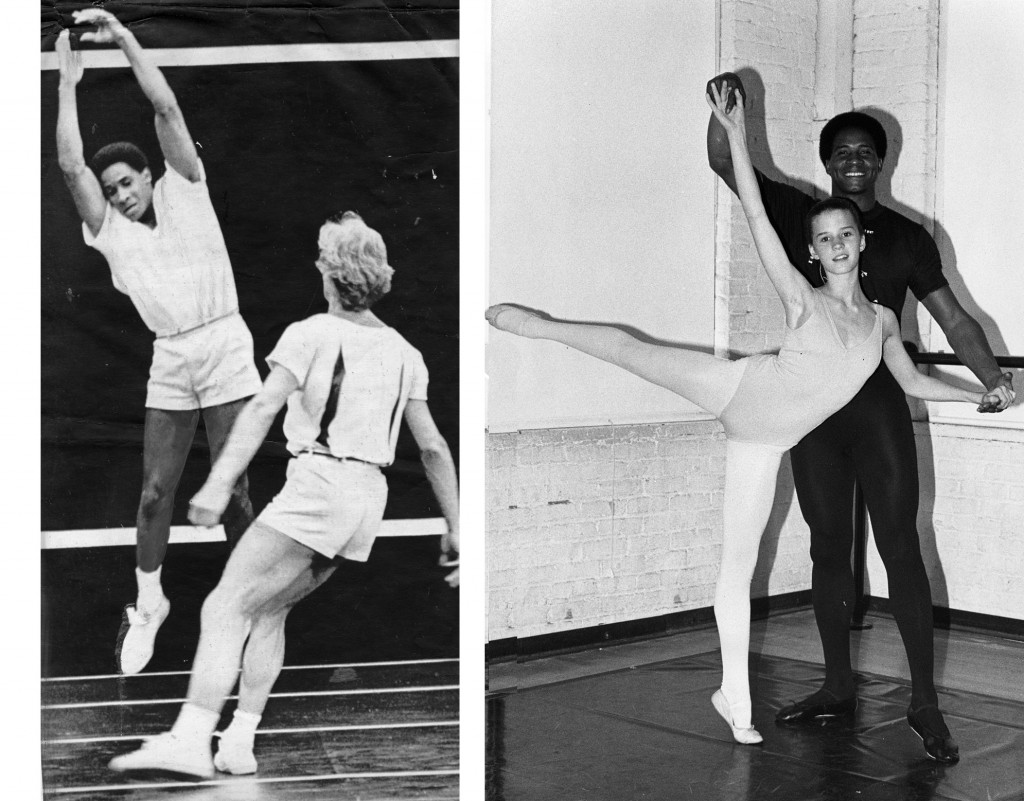- 2019/2020 Recap: Lady Scots Conquer First Round of CIF!
- 2019 Recap: Justin Flowe Wins the Dick Butkus Award
- Upland Lady Scots Have Their Revenge
- What is BBCOR?
- Tommy John, A Name To Be Feared
- The Game Plan
- Too Much Tackle?
- Is Cheer A Sport?
- Transgender Inclusion in Youth Sports
- Are You Counting Sheep Right?
Cross-training Benefits of Ballet
These days, shows like Dancing with the Stars and So You Think You Can Dance are commonplace. Yet, we’re still questioning whether dancers are athletes. Gene Kelly, known for Singing in the Rain, was the first to reinterpret sports as dance in a documentary that aired on NBC in 1958: Dancing a Man’s Game. To prove that the aesthetic and athletic are not polar opposites, Kelly featured big names like baseball player Mickey Mantle and boxer Sugar Ray Robinson. It was widely publicized that celebrated male dancer Edward Villella, star of the New York City Ballet in the 1960s and 70s, was also a boxing champion from Queens. While Villella was a dancer who also boxed, today we see football players who also studied dance. Our young athletes can, like Lynn Swann, Barry Sanders, and Hershel Walker, improve their game and discover the many benefits of ballet.
Dancer and artistic director for the Ballet Quad-Cities School of Dance, Steve Beirens defended the athleticism of dance and encouraged young athletes to take his beginning dance classes as well as opened classes for high school boys and college men looking to expand their athletic skills. Beirens described the number of dislocated shoulders and knee injuries in his dancing career: “I can name you my injuries and you would think I am a football player.” Not only that, “We carry 105 to 110-pound girls with one arm. And we do it gracefully.” Figure skating is similarly beneficial for young hockey players. Former NHLer Ryan McGill explained, “Figure skating at a young age is all about edges and balance, pivoting. When I was growing up, a lot of players took figure skating and then moved into power skating.” It is more common today for coaches and teams to incorporate dance and yoga into their off-season conditioning routines.
Lynn Swann, wide receiver for the Pittsburgh Steelers from 1974-1982, credited some of his greatest plays to his study of dance. He not only studied tap, jazz and ballet from the age of 4 until his senior year of high school, he also practiced with the gymnasts in college. In an interview, Swann explained how body control was his greatest asset: “Terry Bradshaw would occasionally throw it high. I could not have made that catch if I hadn’t taken dance and didn’t have that kind of body control.” When asked if he still would have made those winning catches without his years of dancing, he answered laughing, “Yes, but it might not have looked as good.” The physical skills that Swann gained in his years of ballet training transitioned flawlessly to the football field giving him a distinct advantage over his opponents.
Barry Sanders, running back for the Detroit Lions from 1989-1998, is widely considered one of the finest running backs. Like Swann, Sanders is a pro football National Hall of Fame inductee holding records for rushing over 15,000 career yards and 99 touchdowns. Youth ballet classes also helped Sanders develop footwork and balance that made him successful in his plays. His ability to spin, duck, leap and so gracefully move the ball helped him dominate the league despite his mediocre team. His ability to avoid tackles also meant that he took fewer jarring hits, repeat smaller hits, injuries and concussions. He played well into his 30s and suffers little from injuries common to the sport.
Boys who take karate, soccer, basketball, football and hockey should all take ballet. It improves balance, lateral movement, footwork, coordination, timing, leg and core strength, and most importantly flexibility. Both the ability to avoid hits and increased flexibility reduces the risk and extent of serious injuries. Considering the risks associated with concussions and other risks to growing athletes, ballet could be great training for aspiring football players. Young athletes, like Tom Brady, can wait till high school to play football and avoid the fate of Cincinnati Bengals wide receiver, Chris Henry, who died in 2009. Henry showed evidence of CTE, a degenerative brain disease resulting from repetitive small hits in football. Dance can develop and fine tune necessary skills while avoiding some of the unnecessary damage caused in youth football.
Overall, ballet is proven to improve an athlete’s strength, speed, agility, jumping, balance, and flexibility. Ballet also provides a mental training and concentration under stress that is directly applicable to team sports. 1982 Heisman Trophy Winner MMA fighter Hershel Walker spoke of his respect for ballet: “I started ballet in my early 20’s. I studied for about ten years. Ballet is probably one of the hardest things I’ve done. People don’t give it a lot of credit and think it’s easy but it’s very difficult.” Ballet provides a unique and dynamic body training that many team sport athletes do not receive on a regular basis. The benefits are immeasurable.
Just as dance skills translate well in the sports arena, Dancing with the Stars has proven that 300 pound men can take their football moves and compete on the dance floor. Former defensive linemen, Warren Sapp and other NFL players, Brett Favre, Matt Hasselbeck, and Deuce McAllister, all used their number one asset, their feet, the right positioning and moving into position, to compete–in football and in dance. Athletic performance coach, Ken Croner explained, “The stop-and-go nature of football emulates dance movements. The acceleration and deceleration of dancing comes natural to football players, as it also would to soccer players and basketball veterans”. We shouldn’t be surprised– Gene Kelley told us exactly that 60 years ago.
Read more about boys in ballet and the cost of ballet training.
——————————————————————————————————————————–
Author: Melanie Carbine
Melanie Carbine has degrees in English Literature and Math Education from the University of Michigan and Eastern Michigan University. She has lived in various parts of the world including Micronesia and the United States. She currently writes for several education blogs, vlogs about her travels, and teaches middle school in the DC Metro Area.
Related Posts
Latest
-
2019/2020 Recap: Lady Scots Conquer First Round of CIF!
Upland High School girls’ soccer protected...
-
2019 Recap: Justin Flowe Wins the Dick Butkus Award
—Edited & composed by Kason...
-
Upland Lady Scots Have Their Revenge
The Upland High School Lady Scots...
-
What is BBCOR?
The classic “ping” noise that signals...
Copyright © 2023 KSNN. All rights reserved.









